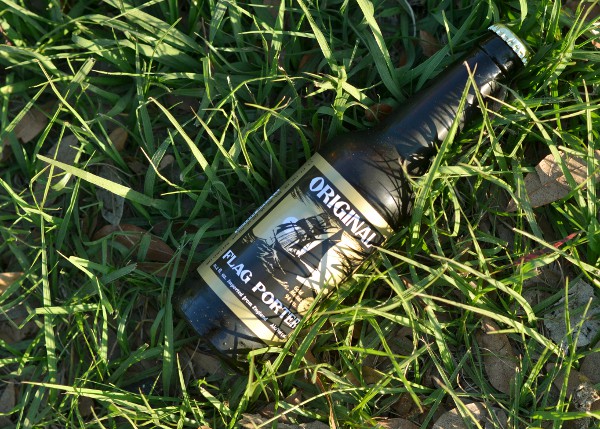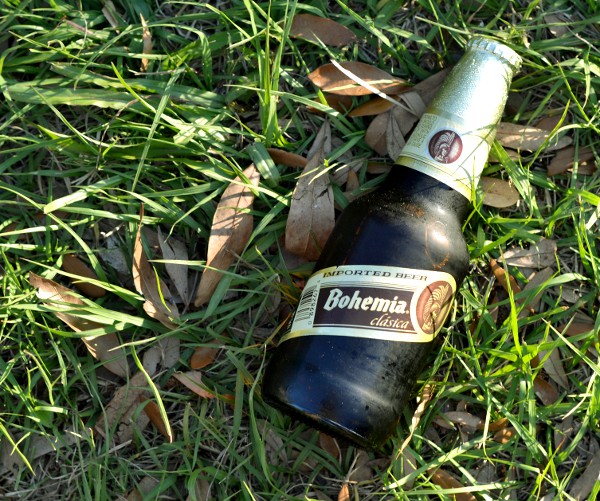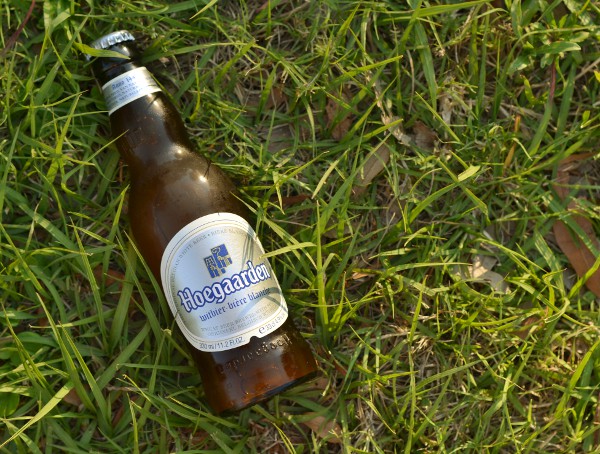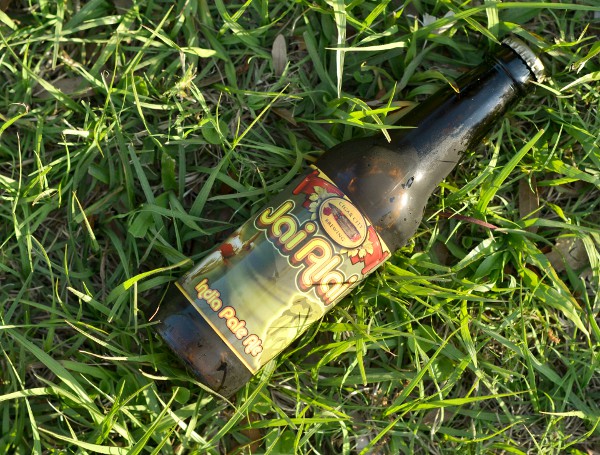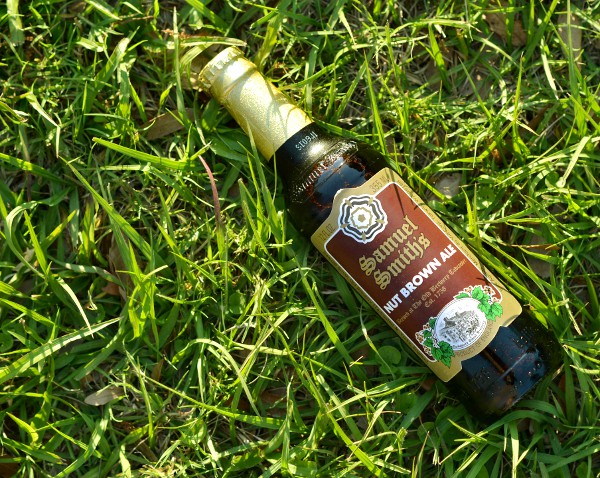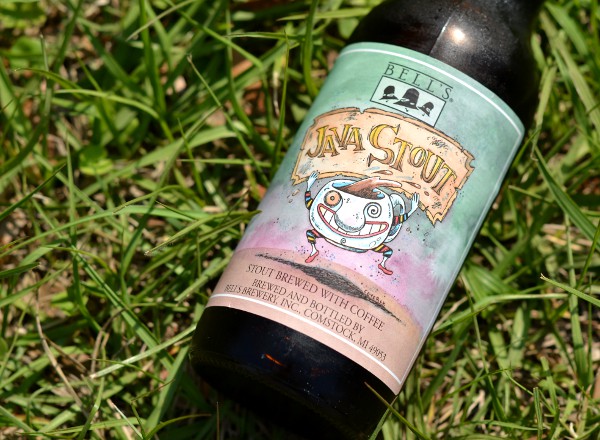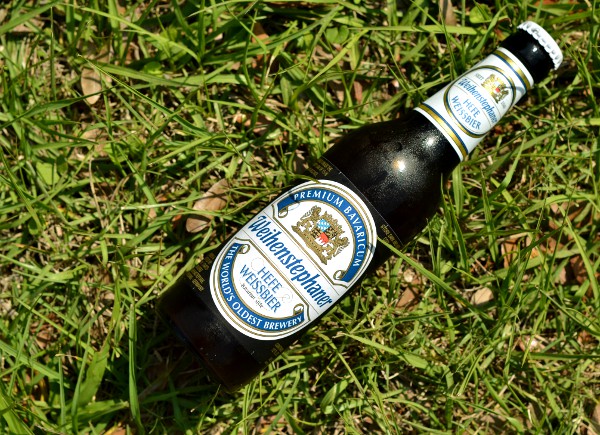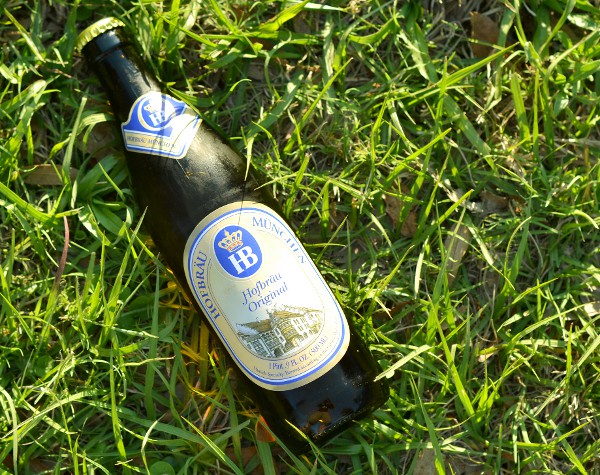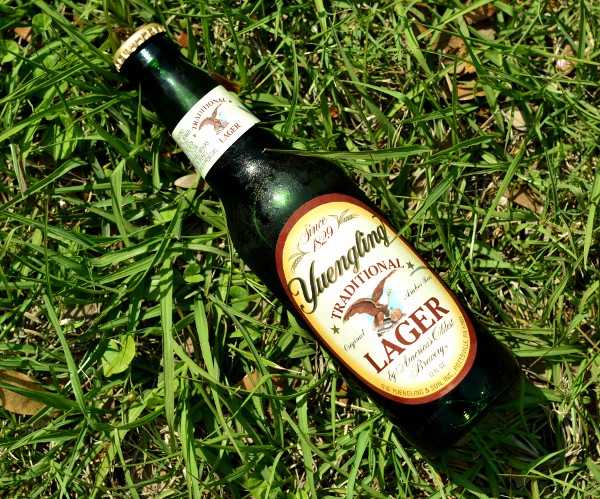Note: while our own preference for beer goes pretty far into the fray, our focus here is on beers that are different– but also accessible. There’s a good chance you can find these beers at your local beer-focused bar or specialty liquor store. Finding a bottle of Pliny the Elder… well that’s a bit too tricky to warrant a slot on this list. Enjoy! And stay tuned for a chance to #snapout and win a home brewing kit, more details at the end of this list…
The Original Great American Beer: Yuengling Lager
There’s really only one value to Budweiser, Miller and Coors beers– they’re readily available on the cheap. How did they get that way? They were true American products, and drinking a Budweiser was as patriotic as driving a Ford truck and listening to Bob Seger. But the same is no longer true, since Budweiser and Miller-Coors are now owned by foreign corporations. If you drink these beers for their old American spirit, it’s time to find a new brand. We suggest Yuengling, America’s oldest brewery and the 2nd largest domestic brewery in the US. Yuenling is largely brewed in Philly and Florida, so locals of those states are well aware of this brand. If you’re outside of PA and FL, Yuengling might be a bit harder to find. If you can’t find this traditional lager on your grocer’s shelf, reach for a Sam Adams. Sam Adams is the largest domestically owned brewery in the United States, and the spearhead of the craft brew movement that helped inspire this list. In short, if you want to drink American, don’t reach for Bud, MGD or Coors, opt instead for a nice, cool Yuengling or the old faithful Sam Adams.
Bored with Heineken? Go Original with Hofbrau Lager
If European lagers are your preference, you’ll find Heineken and Amstel Light at just about every bar in the US. Heineken is marketed as a thinking-man’s beer, an upgrade to Budweiser and a genuinely “good” beer. Yeah, it’s not. In Amsterdam, you might find the locals choosing Budweiser over Heineken for the same reason it is consumed here. When it comes to Euro lagers, Heineken isn’t just below-average, it’s bad when you compare it to the other brews of this style. We suggest you hop on a trip to Germany to really get to know Euro lagers. In Munich, the classic brand Hofbrau (who also makes some of the best Oktoberfest brews) produces the premier Euro lager that is worth its weight in gold. This delicious brew is sincerely a thinking man’s lager, and in contrast to Heineken, it really is a genuinely good beer. If you reach for a Heineken, you’re likely doing so for the label alone. If you are concerned with the taste of your drink, opt for a Hofbrau instead. You’ll thank us.
Wondrous Wheat: Weihenstephaner Hefe Weissbier
Most bars around the world, from hole-in-the-wall dives to high-end clubs, serve some manner of wheat beer. The most popular is Hacker Pschorr, a classic German wheat beer that is nearly 700 years old. It’s everywhere, but is it remarkable? Not for its quality, sadly. If you’re a fan of wheat beers, it’s time to snap out of the Hacker Pschorr cycle and try something new, specifically the Weihenstephaner Hefe Weissbeir. Nearly 700 years older than Hacker Pschorr, this brewery predates much of modern history– like printed books, the discovery of the Americas and even modern democracy. Weihenstephaner isn’t just old, it is absolutely delicious. This is arguably the best wheat beer every produced, and it is good enough to mandate production for over 1400 years. If you enjoy wheat beer, there’s more to the style than Hacker Pschorr. While The Hack is enjoyable in its own right, you haven’t tasted brewed wheat until you’ve enjoyed a Weihenstephaner with a slice of lemon.
Grace to Guinness, but a Change is Due: Bell’s Java Stout
To many, Guiness is old faithful, the most popular stout beer in modern history and one admired by those with Celtic ancestry. If you love Guiness, you owe it to yourself to try other beers in the style with the open expectation that something better may be out there. Not surprisingly, there is– and our recommendation comes from a small town in western Michigan. Bell’s Brewery, one of the top craft breweries in the US, produces a range of stouts but their Java Stout has easily earned a spot on our list. Many drinkers appreciate the coffee flavor of stout beers, but you’ve not tasted that coffee infusion until you’ve tried a Bell’s Java Stout. The mix of classic, chocolaty stout beer with rich, java coffee beans yields a drink that is hard to put down. Guiness is good, but the Bell’s Brewery stouts are a great step forward for those who truly love dark beers.
No to Newcastle: Samuel Smiths Nut Brown Ale
For a beer that doesn’t have much flavor or authenticity, Newcastle seems to have the bar market cornered when it comes to brown ales. If your local watering hole has a brown ale on tap, it’s Newcastle nine times out of ten, and it’s dull even more frequently. In the last decade, Samuel Smith’s has taken a larger hold of the American bar/restaurant market, and is often accessible at a bar with a good selection. If you want to experience a truly good brown ale, try Samuel Smith’s Nut Brown Ale. This bottle define’s the British-style brown ale, which says a lot since this style originated directly in that neighborhood. If you want a bittery, brown-sugary bottle of Brit brown goodness, give Sammy Smith’s a shot during your next session.
Coast to Coast: Cigar City Jai Alai Pale Ale
It is terribly difficult to knock the most common pale ale served in bars in the US, Sierra Nevada’s Pale Ale. It’s a solid beer, and you can rarely go wrong when ordering it. Due to its ubiquity, however, it isn’t hard to get tired of drinking Sierra Nevada. If you love the flavor but want something not only different, but better, get a bottle (or a six pack) of Cigar City Jai Alai Pale Ale. Jai Alai (pronounced “hai uh-lai”) is just about everywhere in our own neighborhood here in South Tampa, FL. It’s brewed a stone’s throw from our HQ, and it’s not uncommon to see us breaking for a Jai Alai or a Maduro Brown. Cigar City is a younger brewery, but their brews have earned the absolute best ratings a beer can get. Pale Ales are the mark of a good brewery, and this new brewery produces one of the finest in the US. If you haven’t had a Jai Alai, demand that your local beer boutique get them (if they can, as demand is far outweighing production). This might be the one case where we suggest a beer that isn’t widely accessible. But to throw you a bone, if you’re on the West coast, try a Pliny the Elder. If y0u’re anywhere else, you can’t go wrong with a Dogfish Head.
Beyond Blue Moon: Hoegaarden White
It might surprise most common beer drinkers, but Blue Moon is not the only/end-all/be-all of the White Ale style. There are plenty of white ales produced here in the US and internationally, and one widely-accessible upgrade is available in the form of Hoegaarden Witbier. Hoegaarden (that’s pronounced “who” garden not “ho” garden) is a clear improvement over Blue Moon, a fresh and fizzy white ale with plenty of citrus kick for bright taste buds. It’s not the best white ale (our favorite is the St. Bernardus Witte, but that’s not as easy to get ahold of), but it is damn good when you can have it. Want a pro-tip? Get a six-pack of Hoegaarden White and a pint-sized bottle of Frambois Lambic, the pre-hop beer made with Fruit in Belgium. Pour just a dash of the Frambois into your glass of Hoegaarden, just enough to change the color a bit, and you’ll have a raspberry-infused white ale that is better than any other white on the planet. Give a double-shot of the raspberry beer for those who prefer fruitier tasting beverages.
Pass on Corona: Get Away with Bohemia Instead
The common phrase that describes the Corona lager is “miles away from ordinary”, but “miles away from authentic” might be a better slogan. Corona is essentially Budweiser with a sandy ad campaign, with a flavor improved only by a lucky lime, having nothing to do with what goes into the brewing process. Let’s face it, the reason to drink Corona is as an escape from cold weather, with Mexican food or as a celebration of freedom borne in the mindset of a nice spring break. The beer itself? No thanks. If you desire the “get away” vibe of a Mexican beer with an actually authentic taste, we suggest Bohemia Clasica. This writer’s father turned us on to it shortly after college, and we order it whenever it is on the menu. If you want a break from the convention, a good beer with an escapist mentality, book Bohemia.
Why Drink “a” Porter When You Can Drink “the” Porter?
While Porter is not the most common beer in the US, it’s not difficult to find. Michelob sells one at most grocery stores. Anchor Brewing does a solid big-label craft version. Even Yeungling sells a porter. If you’ve had any of these, have you had a real, traditional English porter? No, you haven’t. Porter was a style of beer brewed on the cheap for dock hands in Britain, sold side-by-side with porterhouse steaks. A “porterhouse” was a pub on the shipyard that sold real meat and real beer to real men and their families. But centuries ago, the beer brewed in these porter houses fell out of favor and not only the recipes were hard to find, the yeast required for brewing was lost altogether. In the 1980s, a group of undersea explorers lifted a sunken ship from the English channel and found barrels full of the yeast used to brew Porter beers in the 18th century. The yeast was still alive, just waiting to be reproduced and married to the classic porter recipes of the 1800s. This beer is the result of that marriage. Want to taste a porter beer in all of its original glory, the beer that was celebrated by British dock hands nearly 300 years ago? Original Flag Porter is your beer, friends.
Snoring from Stella? Duchesse De Bourgogne is a True Luxury
View in gallery Stella Artois is a pretty name with a pretty label and a pretty glass paired to taste. Is the beer within as pretty as the brand surrounding it? From our opinion (and the ratings as well), no, no, no. “Stella” is essentially Budweiser with face lift, a so-so beer with a nice body without much personality. If you find yourself ordering Stella Artois for these reasons, why not buy something with a pretty name, a pretty label, a pretty glass and absolutely beautiful contents? We suggest Duchesse De Bourgogne, our favorite beer and a true departure from what you might expect from a beer. While Duchesse De Bourgogne (pronunced “Doo-Shay Deh-Bore-Gone”) is considered a Flander’s Red Ale, it is vastly different from any “red ale” you might be familiar with. It is as much wine as it is beer, a flavor full of raspberry and clove with hints of fine vinegar, but rooted with the rich effervescence of a solid quality beer. Duchesse is as tasty warm as she is cold, so we suggest trying one well-chilled and one at room temperature. It is an exquisite beer drinking experience, matched with a much finer visage than your standard Stella Artois with a goofy gold-rimmed glass… – – – – – – – – – So, what’s your favorite beer at your favorite watering hole? We tried to stick with beers that are widely accessible, yet our tastes are notably more progressive. That doesn’t mean you need to be– what’s your favorite beer of the moment?
